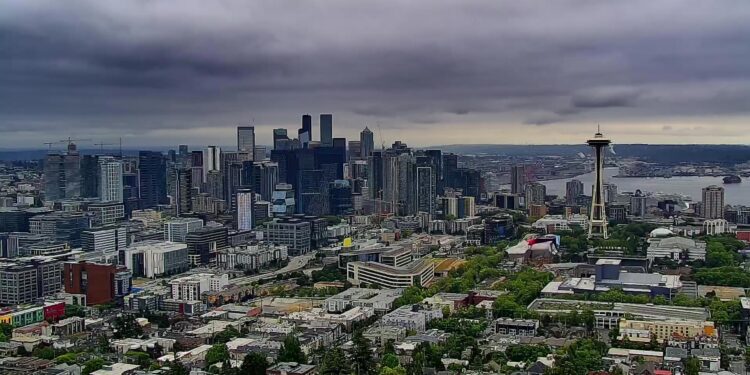Seattle city leaders are preparing for a $143 million budget shortfall over the next two years, citing a mix of declining construction activity, slower tourism, and growing concerns over newly imposed international tariffs.
The revised revenue outlook, presented this week by Jan Duras, the city’s Interim Director and Chief Economist, indicated that the expected deficit has shrunk from an earlier projection of $251 million. Duras attributed the narrowed gap primarily to lower-than-expected inflation.
Despite that, the city’s financial challenges remain substantial. Duras emphasized during a presentation to the City Council that the sweeping trade duties recently enacted by the Trump administration now represent one of the biggest threats to Seattle’s economic stability.
He noted that there is a significant level of unpredictability in the current environment, which makes it increasingly difficult to deliver accurate economic forecasts.
The federal tariff policy, which took effect early Thursday, imposes new duties of 10% or more on a wide array of goods imported from over 60 countries. Shipments from major partners such as the European Union, Japan, and South Korea now face a 15% tax, while products originating from Taiwan, Vietnam, and Bangladesh are subject to a 20% rate. The administration has also urged countries like Japan and EU member states to boost their investment in the United States.
President Trump, in a statement on Wednesday, said he believes the country is entering a period of unprecedented economic expansion, asserting that the U.S. is generating “hundreds of billions of dollars in tariffs,” though no specific revenue figures were provided.
Back in Seattle, local officials are contending with an economic slowdown fueled by multiple factors. These include a sharp downturn in the construction sector, weakened sales tax revenues, a cooling demand for office real estate, and a projected 27% decrease in international visitors.
Duras explained that these tariffs could contribute to increased inflation, which in turn might delay or prevent the Federal Reserve from implementing interest rate cuts that economists believe would help ease some of the economic pressure. Still, he acknowledged that market watchers are hopeful for a potential rate reduction as early as September.
He added that while the outlook isn’t exactly bright, it’s also not as dire as it appeared earlier this spring. The immediate impact of tariffs, according to Duras, hasn’t been as damaging as many had initially feared.
Still, signs of an economic slowdown are becoming more visible, particularly in terms of job creation and broader financial activity across the region.







